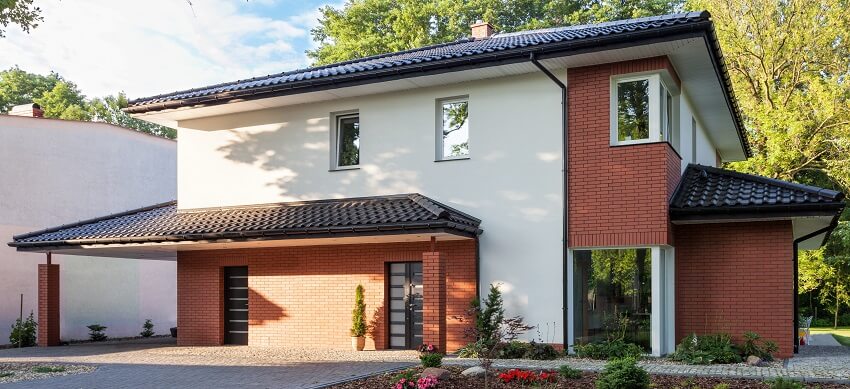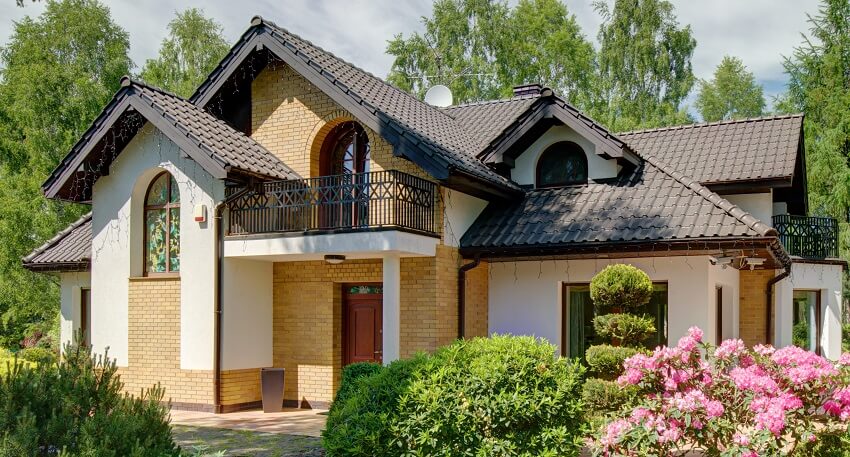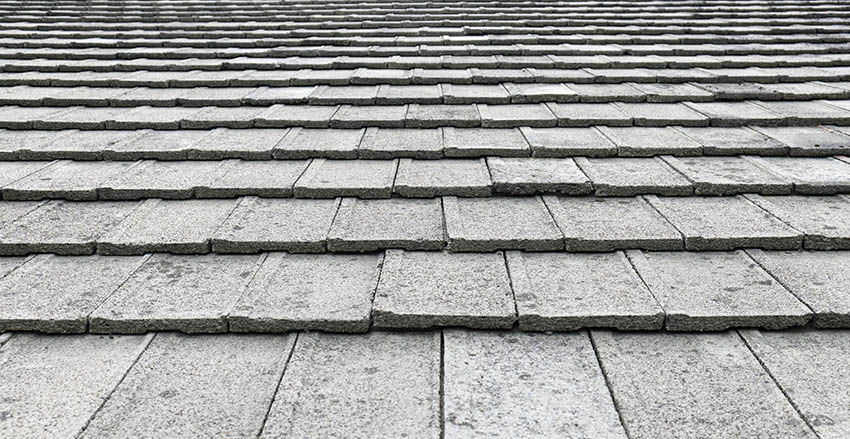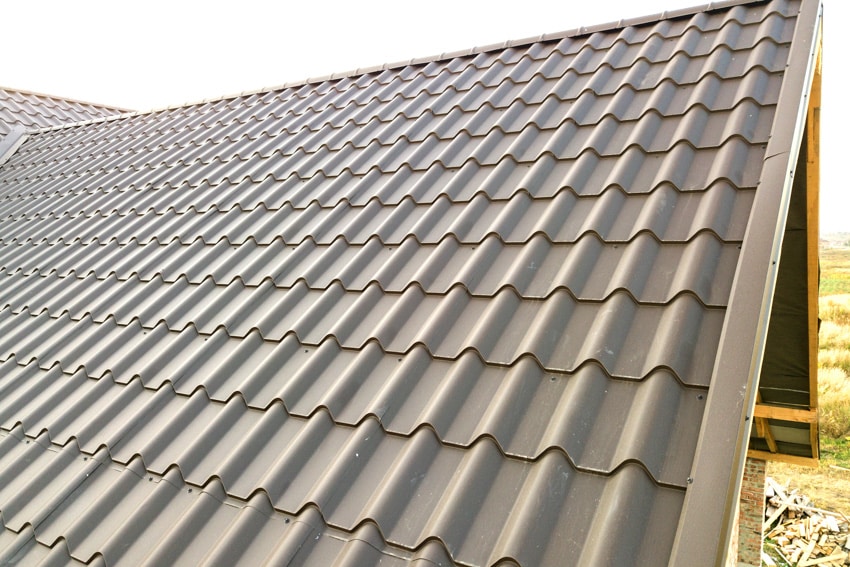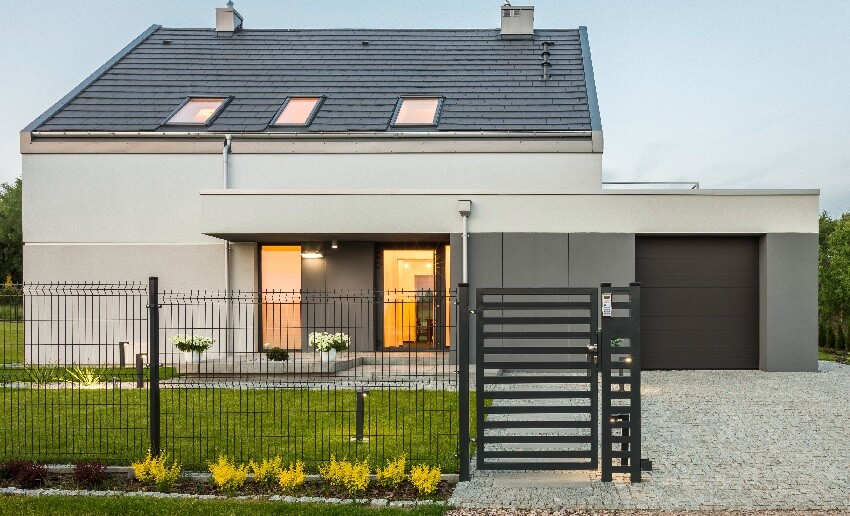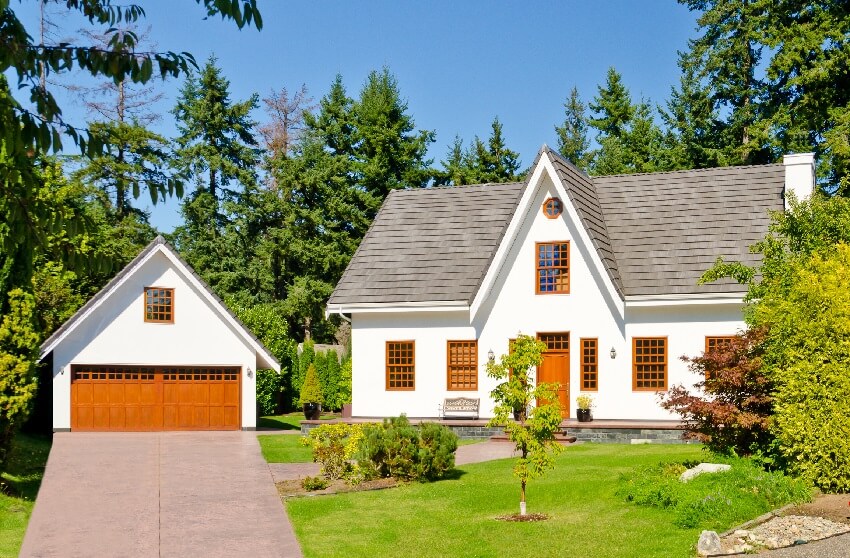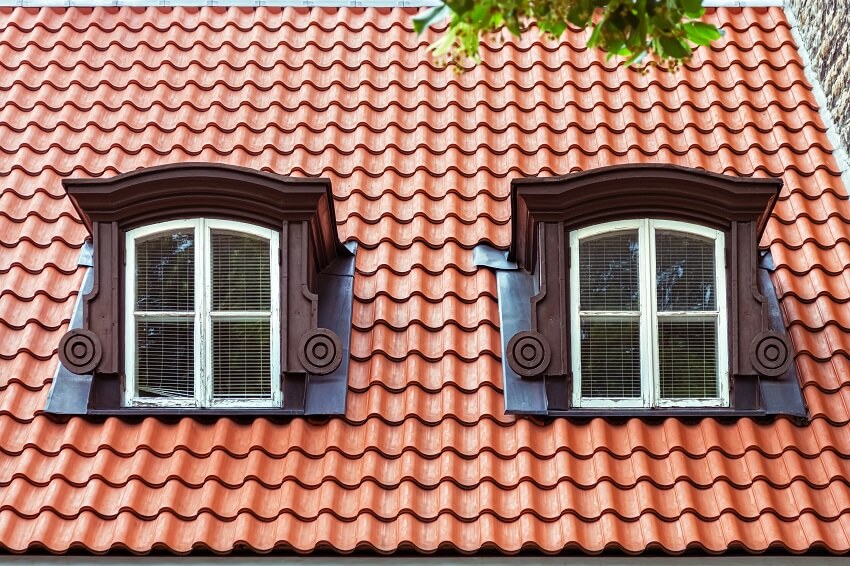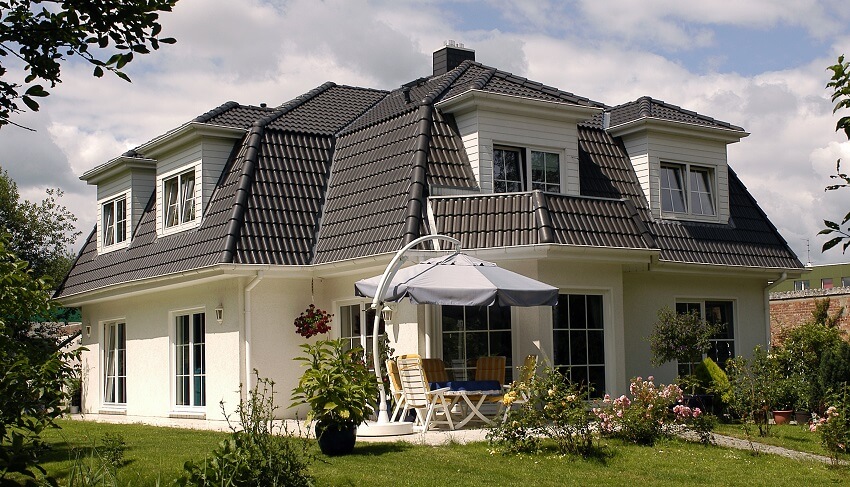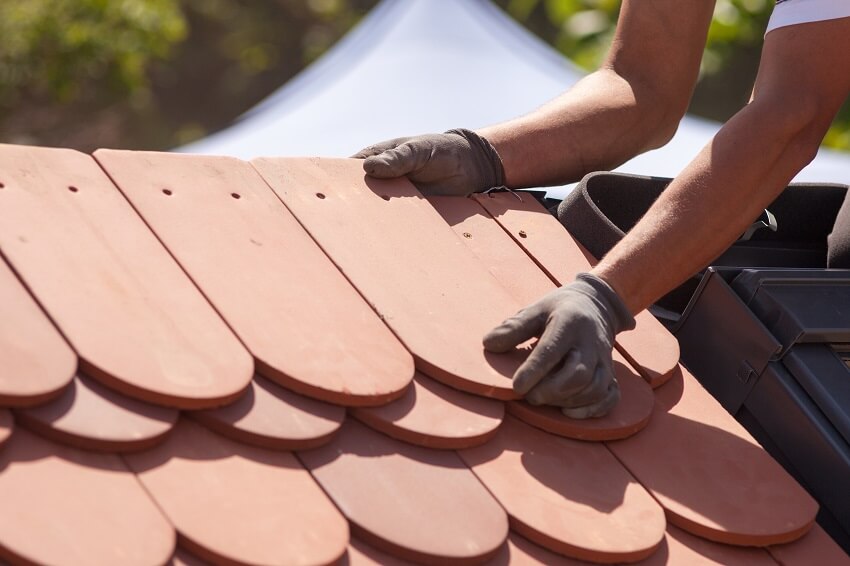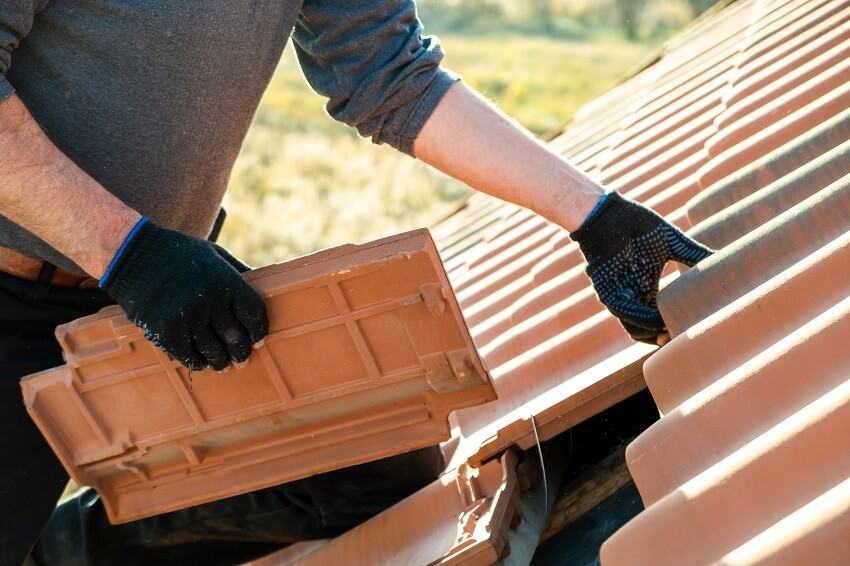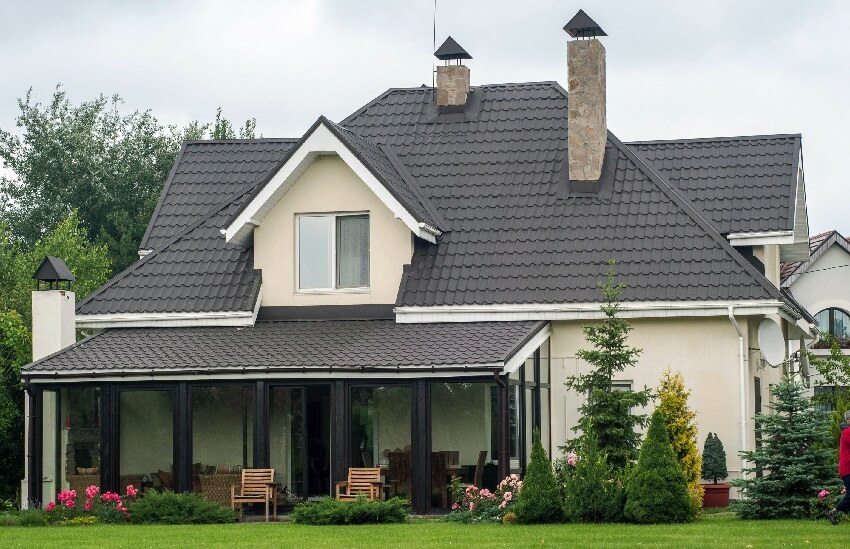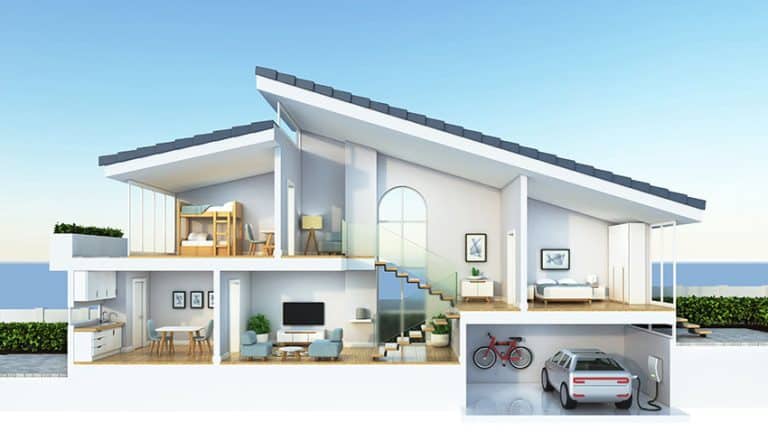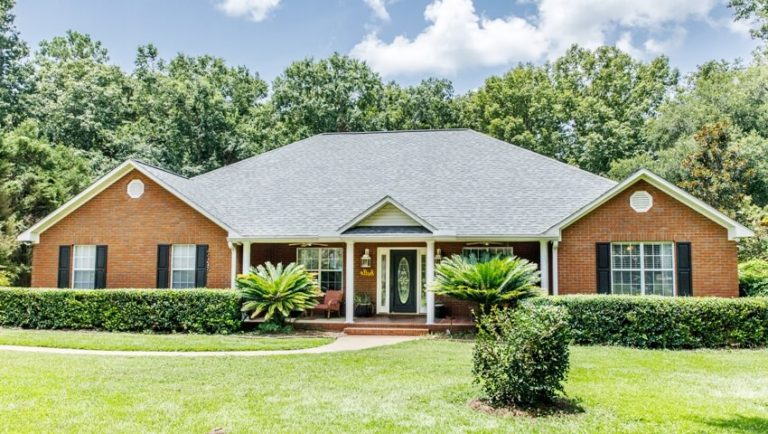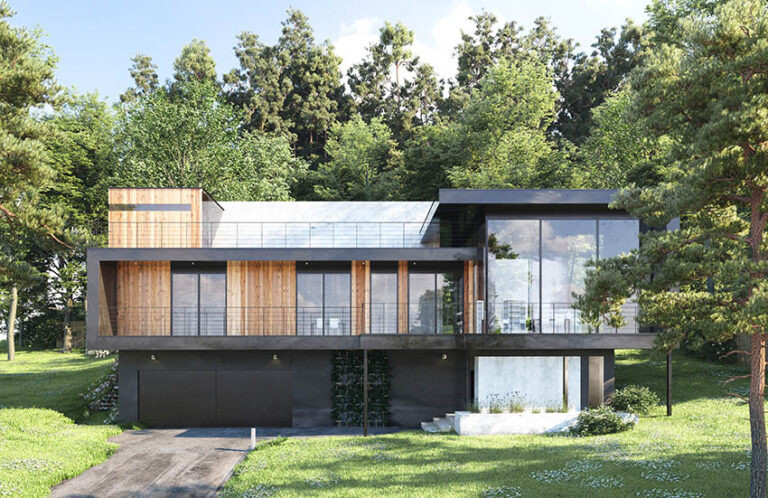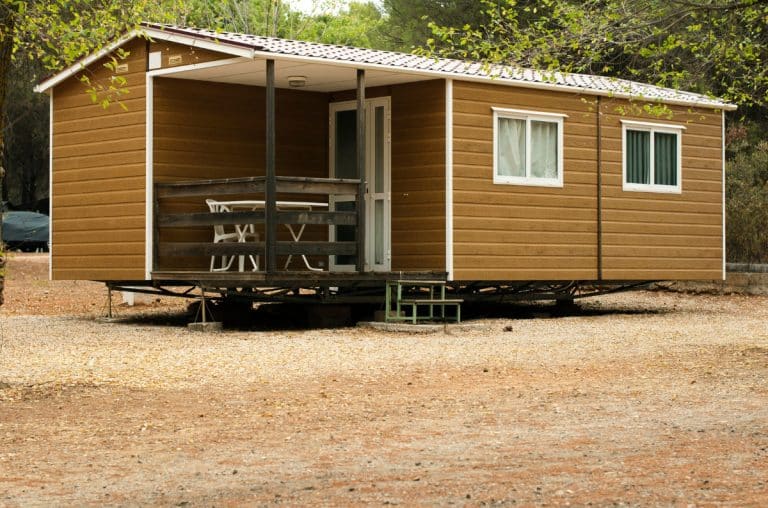13 Popular Types of Roof Tiles to Enhance Your Home Aesthetics
Without a roof, your home won’t offer very much protection from the elements. Still, that doesn’t mean that your roof is completely utilitarian, though. You can still add a bit of your own style to your roof by choosing your roofing material.
One choice that you have is to use a tile roof. On the other hand, where do you start? Well, keep reading to learn everything you need to know about roof tiles and your options concerning them!

If we’re going to break down everything you need to know about the different types of tile roofing options available to you, we have to answer a basic question: what is a tile roof?
There are a lot of different types of tile roofing but at their basics, a tile roof is simply a roof made up of overlapping tiles.
The specific tiles can be made with a variety of materials and we’ll take a look at some of the most common options in a moment. When these tiles are attached to create the roof, they are attached to the framework for the roof and the under layer.
Tile roofing is a specialized job and some of the materials are harder to work with than others, making them a job often best left to trained professionals.
Different Types Of Tiles
Here’s our list of the most popular types of roof tile materials.
Composite Tiles
Composite roof tiles are interesting because they aren’t made of a single material. In fact, they aren’t even entirely natural or man-made. The materials in composite roof tiles are usually a blend of both. As for natural materials, they might include wood, clay, metal, stone, or concrete.
One big advantage to composite roof tiles is that they can work to mimic a lot of different materials. This means that you can use it in place of another material that might be out of your budget or difficult to install.
With composite roof tiles you can choose from a wide variety of appearances as well. On top of that, they’re fairly lightweight, so they’re easier to install. Even better, it’s very common for this type of roof tile to come with a warranty.
Concrete Tiles
Concrete tiles aren’t as common as some other options but they’ve been around for a while. They first came into popularity in Bavaria partway through the 19th century. What may surprise you is that concrete roof tiles can mimic other materials very well including clay tiles, slate tiles, and even wood.
Today, the process for making concrete roof tiles is automated versus the handmade process that was once used. This means as the process has become more industrialized, the use of concrete tiles has become cheaper. By now, concrete roof tiles are among the most budget-friendly options you have.
This is a heavy type of tile to use. As such, you’ll want to make sure you have all the support and reinforcements that you need to support such a heavy roof.
Clay Tiles
There are few choices as tried and true as clay roof tiles. Clay is a natural material that’s fairly readily accessible and has been for much of human history. So, it’s no surprise that clay made its way into building materials fairly early on. One commonplace that this material shows up is in roofing tiles.
Earlier in history, it was standard for clay tiles for a roof to be hand-shaped from clay and then left to harden in the sun. While the process is much more commonly automated now, the shapes that clay roof tiles have been associated with have stuck. Thus, you’re more likely to see a barrel tile or flat tile when you’re remodeling a clay tile roof.
You’ll want a talented professional, though, since clay is easy to break if you aren’t sure how to work with them. This is an option you’ll need to make sure that you have the supports to carry the weight of as a roofing material.
Metal Tiles
The concept of metal roof tiles is rather broad. That is to say that you aren’t going to type in an order that reads “metal tiles.” Rather, metal tiles can be broken down into different types of metal roofing sheets used to resemble tiles. This most commonly includes metal like steel, zinc, copper, or aluminum.
Metal roof tiles, like any other type of roofing, come with pros and cons. The advantages to metal include that they’re lightweight which makes them easy to install. Plus, metal is known as fairly durable material.
Still, there are some drawbacks. For instance, while metal is durable, it can also be hard to repair if it gets dented.
Metal is also known as a fairly noisy material so it’s best to use for roofing when you don’t mind hearing the rain outside at a higher volume. They may also not offer the same level of insulation as other options.
Slate Tiles
When it comes to slate roof tiles, you’re looking at a fairly classic choice for your roof. Slate is also recognizable as a material to use in building, design, or roofing. That isn’t to say that every slate tile roof looks the same as the last.
There’s a wide array of color variations available including red, gray, purple, green or black roofing. The color largely depends on the region the slate came from.
As for practical benefits, there are a variety of features you can take advantage of. For example, slate is fire-resistant as well as generally durable. So, you can rely on it to last a while.
The biggest downside to slate is its weight. You’ll need to make sure that you have all the necessary reinforcements to support a slate roof as well. This can make installation more expensive as well as any repairs down the line.
Solar Tiles
Have you ever wanted to be a little greener in your day-to-day life but aren’t sure how? What if you could power your home with a more environmentally friendly option than you have now? You could with an option like solar roof tiles.
These roof tiles aren’t simply stone or manmade material. Instead, they’re functional solar panels that can turn the sun that beats down on them during the day into electricity that you can use in your home. This can even help you cut down on your electricity bill in the long run.
However, you’ll have to prepare for a higher upfront cost to save on your electric bill later. The biggest downside to these types of tiles is that they’re costly to install and they’re costly if you need to repair them later on.
Synthetic Tiles
While there are plenty of natural options when it comes to roof tiles types, you also have the choice of some man-made options, as we’ve mentioned. Unlike composite tiles, however, synthetic tiles are completely man-made.
This manufacturing process also allows the tiles to suit whatever look you’re aiming for, whether that’s something unique or mimicking a classic.
The good news is that synthetic roof tiles offer a host of benefits. This includes easy maintenance and the peace of heart that you won’t need to put a lot of energy into maintaining them. They’re fire-resistant as well, so you can rest easy knowing that you have a little extra protection for your roof.
The best part about synthetic roof tiles is that they usually come at a lower cost than their natural material counterparts like stone tiles.
Tile Styles
Below are the most popular roof tiles styles for your home.
Interlocking Tiles
Interlocking roof tiles are fairly true to their name. When they’re laid out on the roof, they’re laid in a pattern so that they interlock and overlap with other tiles as needed. Specifically, they interlock at the sides.
As for the benefits of these types of roof styles, the list isn’t short. For one, the way in which you can lay interlocking roof tiles in a flat sheet makes this a lightweight style to use. This is great for heavier materials like clay.
Interlocking roof tiles are often a cost-effective choice as well. It’s a generally affordable option that benefits from often requiring fewer tiles to cover your whole roof than some other styles.
This will help you save on some of the upfront costs that come with renovating your roof. This style is most often seen with materials like clay and concrete.
Flat Shingle Tiles
Of course, not every type of roof tile needs a shape that pops out or features decorative elements. One of the most straightforward and most common choices homeowners make for their roofs is to opt for flat shingle roof tiles.
These tiles are usually made from concrete and have a generally flat shape save for interlocking edges or water locks.
However, you’ll want to remember the fact that concrete is a fairly heavy material. So, you should make sure that your roof has the proper support it needs to handle a concrete roof before committing to installing one.
On the bright side, there are some benefits to flat shingle roof tiles too. For one, concrete flat shingle roof tiles are great in almost all weather conditions – they aren’t going to crack when it gets cold. On top of that, they can last up to 50 years if the roof is well maintained. See more types of roof shingles here.
Barrel Tile
Barrel tiles, on the other hand, are made out of clay. There are a few types of barrel tiles roofs too such as Spanish tile or a curved S-tile roof and a Mission-style or M-tile roof, both with a humped pattern.
No matter what type of barrel tile roof you have, though, it probably features a terracotta or rusty orange tone since it’s made of clay.
One of the best things about a barrel tile roof is that it’s not going to fail on you anytime soon. There are barrel tile roof examples that have lasted a century or more. Since they’re curved, these tiles are safer from water-related damage like mildew than flat shingle roof tiles, as an example.
On the contrary, you might want to skip this choice in cold climates to avoid the clay cracking during cold weather snaps. Not to mention, since clay is a material best left to the professionals, you might be looking at a costly installation and you’ll need to find someone used to working with this material.
Shake Roof
Shake roof tiles, interestingly, are an option made of wood. It comes from split wooden logs worked down into tile shapes.
This process is usually done with a red cedar or redwood tree. The term “shake” comes from the fact that a single one of these tiles is called a shake. That means that once you add all the shakes, you’ve created a shake roof.
This type of roofing is often praised for its appearance although they do tend to start to show their age in a way that more durable materials might not.
You’ll have to watch out for the effects of constant sunlight as well as heavy rain to make sure that there are no signs of damage over the years. Yet, some options are resistant to problems like algae.
The biggest downside to shake roof tiles is that they aren’t recyclable. This means that they aren’t always the best choice if you’re trying to stay as green as possible.
French Tiles
French roof tiles have been around since the late 19th century in, no surprise, France. The tiles have a distinct appearance too. The most noticeable features are a pair of flutes and deep locks on each side.
With this design, not only is the roof breathtaking in appearance but offers additional enhanced drainage which can help your roof perform well in the rain.
As for the material, French roof tiles are most often made with terracotta – a type of clay. As with other clay roof tiles, you’ll want to make sure that you have the right support for the roof before getting started.
As a clay roofing option, the downsides of this type of roof are often related to the disadvantages of clay. As an example, colder climates are more likely to be harder on the tiles as it’s easy conditions for clay to break or snap. You’ll also want a professional to complete the job correctly.
Scalloped Tiles
Scalloped roof tiles are known by a few other names too, including circle siding or fish scale siding. The design gets the latter name from the fact that the way the tiles overlap when they’re installed to create a roof has the same pattern as the scales on a fish. It’s a design that’s sometimes used in creating siding as well.
To create this pattern, each of these tiles has a slightly odd shape. Of course, the visible part of the tile is usually rounded or hexagonal.
As for the “top” of the tiles, where they’re connected to the roof and the part that’s covered when they’re overlapped is a straight edge, making them easier to install than if it was rounded on both sides.
This type of roofing is often valued for its distinctive and unique appearance, so it’s a great choice if you want your house to stand out a bit.
Roof Components
The components in a tile roof largely depend on the material the roof is made of. For example, the answer will be different if you opt to use aluminum roofing tiles or an option like clay or even concrete which is a mix between cement, sand, and water.
Another component of the tile roof is the underlayment you’ll need. This is the base layer of your roof that the tile will go on top of and connect to. On top of that, using an underlayment gives you or the person installing your roof a surface to work and walk on while they’re on the roof while they lay and secure the tile.
As for lasting reasons you’ll need an underlayment, the rain is a big part of this. It can help protect you from moisture while the roof is still being installed and in the case that your roof is damaged during inclimate weather later on. See a complete list of roofing components according to IKO.
How Much Do Tiles Cost?
The cost of roof tiles depends heavily on the type of tile you choose and, when purchasing tile for the entire project, how many tiles you need. We’ll take a look at some of your options here.
The average cost of roofing tiles is about $4 to $16 per square foot. Once again, this depends on the material. If you want to stay closer to $4 per square foot, an option like concrete is best.
Some types of tiles can go even higher than this estimate including solar tiles which can cost up to $25 per square foot.
Tile Size
The size of roof tiles can vary, it’s true. Different manufacturers might use slightly different sizes and concepts like different roofing designs can affect exact dimensions.
Still, there’s a general measurement that you can watch out for. Most roof tiles are 342 mm long, 252 mm wide, and 69 mm deep.
As we’ve said, though, this isn’t a foolproof size and much of the changes are likely to vary between different manufacturers.
How Many Tiles On A Standard Roof?
Now that you know how big a standard roof tile is, there’s one more question to answer. How many roofing tiles will you need to cover your roof?
Of course, part of this depends on the size of your specific roof, so we’ll take a look at some estimates for the standard roof. You’ll usually need at least 10 or up to more than 60 tiles to cover a square meter of your roof.
How Are Tiles Attached to the Roof?
Roof tiles aren’t glued down or secured into place the same way flooring is. In fact, you could closer describe roof tiles as “hung” on the roof. Nails are put down that the tiles are hung off of and help secure them into place.
You also aren’t going to see your roof tiles hung in neat, adjacent rows. For the best protection against the weather and the most durability, the tiles are positioned to overlap.
This usually means that the rows are slightly closer together so that rather than being side-by-side, they have a slight overlap onto the next row. As we’ve seen, however, not every style interlocks or overlaps in the same pattern.
What Are The Best Tiles To Buy for the Roof?
Just like anything else, if you want a high-quality answer to your roofing needs, you need to consider where you’re getting your roofing tiles too. The climate of your area will also have a big impact on the type of tile you buy.
With this in mind, what are the best roof tiles to buy? Once again, this can depend on what type of roofing you want as different manufacturers may specialize in different materials.
As an example, if you want a metal tile roof, you can turn to brands like McElroy Metal, Englert, or Certainteed. On the other hand, if you wanted a shake tile roof, you could turn to manufacturers like Waldun, Imperial Shake Co., or Watkins Sawmills.
Generally speaking the best type of roof tiles to buy are clay tiles. Clay tiles are lightweight and offer strong resistance to many different climates.
Slate roof tiles are expensive but excellent for use in raining conditions.
Metal roofing is a great choice for snowy conditions and hot climates.
Reflective tiles are a good choice for areas with intense sun as they reflect heat outward to help keep the house cooler.
Remember, the cost of materials, as well as their quality and the number of aesthetic options, can slightly vary between manufacturers as well.
Best Tiles For Windy Areas
When you’re considering your roof, you have to remember that this part of your home will always be exposed to the weather. As a result, you need to make sure that the material you choose is well-suited to the climate that you live in.
If you live in a windy climate, you’ll need to make sure you use a material that won’t easily be torn or blown off by high winds. Otherwise, you risk finding yourself on the hook for costly repairs.
In the case of frequently windy weather, you’ll want to opt for a material like metal tiles, clay tiles, or even a material like fiberglass so everything stays in place as it should.
Did you find all of the types of roofing tiles you we’re looking for? If we missed any information, or you have more questions, please let us know below in the comments. Visit our roof deck design gallery for more related content.

